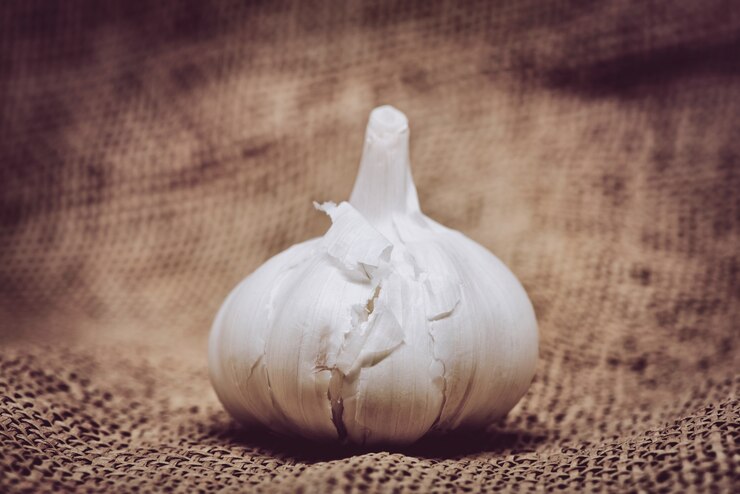
At right, a clove of Elephant next to a nice-sized clove of regular garlic:
This Big Daddy has the largest bulbs and cloves of them all. It is the king of the roasters. Some Elephant individual cloves are larger than an egg!
Elephant is the mildest of the garlics, and is actually closer to a leek than a garlic. Awesome for stews, roast vegetables and garlic mashed potatoes. Elephant grows well in most parts of the country.
Since the bulbs will probably be larger than typical garlic, plant farther apart with a minimum of 6″ between cloves. Mulching with straw or grass clippings and keeping the soil relatively moist, even during the winter, promotes larger bulbs.

Elephant Bulblets or Bulbils (also incorrectly called korms): This is a fun way to gain some elephant garlic for your garden! Bulbils (aka bulblets) are seed-like growths found at the bottom of many elephant bulbs. They can be left in the ground after harvesting elephant garlic, or can be moved and replanted.
Soaking the bulbils for a few days, and even cutting/scoring a small slit in the bulbil toward the bottom can improve germination rates. The bulblets’ shell is very tough, so a score helps moisture get inside to allow the seed to expand and sprout. The shoots may not emerge until spring or early summer, so don’t forget where you plant them!
Plant the elephant bulbils this year, and expect to harvest “rounds” (large, round bulbs that have not yet formed multiple cloves per bulb) next year…although we have had some multi-clove bulbs form the first year from bulbils. Re-plant the “rounds,” and harvest potentially VERY large bulbs of elephant the following year.
All garlic seed for sale is supplied by our small micro farm in Elgin Oregon – Greifs Gourmet Garlic!










